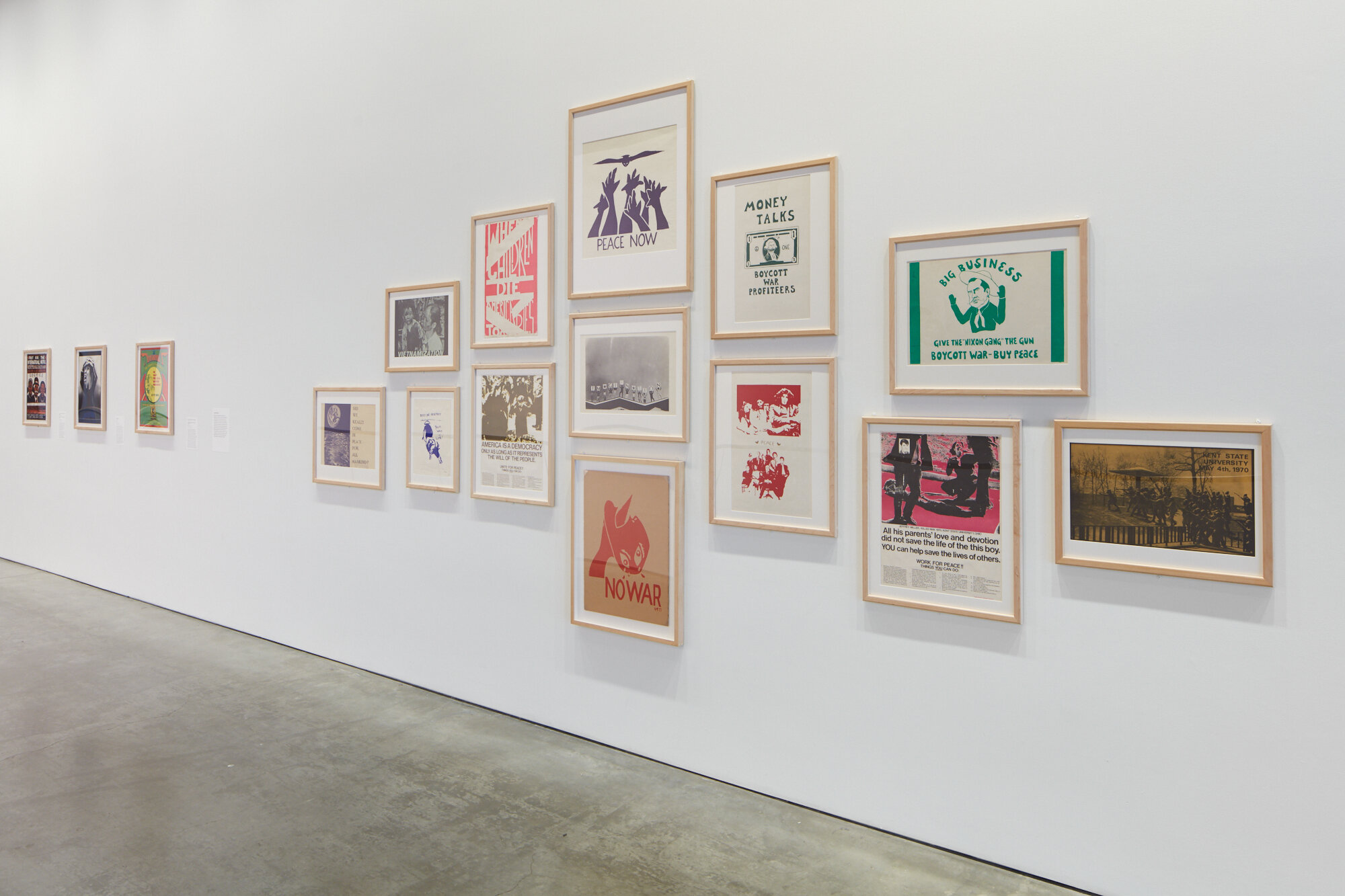Art for Human Rights: Peace Now!
February 26 – August 30, 2020
Peace Now! presents a selection of these posters from BAMPFA’s collection and places them in context with other protest material created at and around UC Berkeley in the sixties and seventies. The latest entry in the museum’s ongoing Art for Human Rights series, the exhibition considers the materiality, ephemerality, and utility of posters as tools for social and political intervention, and speaks to the sense of urgency, anger, and vulnerability felt by students coming of age during that tumultuous time. It offers contemporary viewers the opportunity to reflect on an era in our country’s history when we were at war with one another while waging war abroad, and politicians targeted college students as enemies of the state.
In the spring of 1970, President Richard Nixon announced an expansion of the Vietnam War into eastern Cambodia. After fifteen years in Vietnam, the maneuver prompted outrage across an already divided United States. Nixon and other conservative politicians, tired of near-constant dissent, focused their energies on vocal university students who protested the war. Nixon called them “bums,” while Ohio Governor James Rhodes went so far as to refer to student protesters as “the worst type of people that we harbor in America.” Rhodes would permit police and the National Guard to use force against campus protesters—a decision that led to the death of four students at Kent State University in Ohio on May 4, 1970. Ten days later, two more students were killed at Jackson University in Mississippi.
Nationwide, colleges and universities closed their campuses in response, but at UC Berkeley a coalition of students, faculty, and staff formed to protest the escalating violence abroad and at home. Rapidly, they produced silkscreen posters on any surface available—used computer paper, old festival posters, pieces of cardboard—and plastered them across the campus and the cities of Berkeley and Oakland.
Fifty years later, Peace Now! presents a selection of these posters from BAMPFA’s collection and places them in context with other protest material created at and around UC Berkeley in the sixties and seventies. The latest entry in the museum’s ongoing Art for Human Rights series, the exhibition considers the materiality, ephemerality, and utility of posters as tools for social and political intervention, and speaks to the sense of urgency, anger, and vulnerability felt by students coming of age during that tumultuous time. It offers contemporary viewers the opportunity to reflect on an era in our country’s history when we were at war with one another while waging war abroad, and politicians targeted college students as enemies of the state.
Curator



